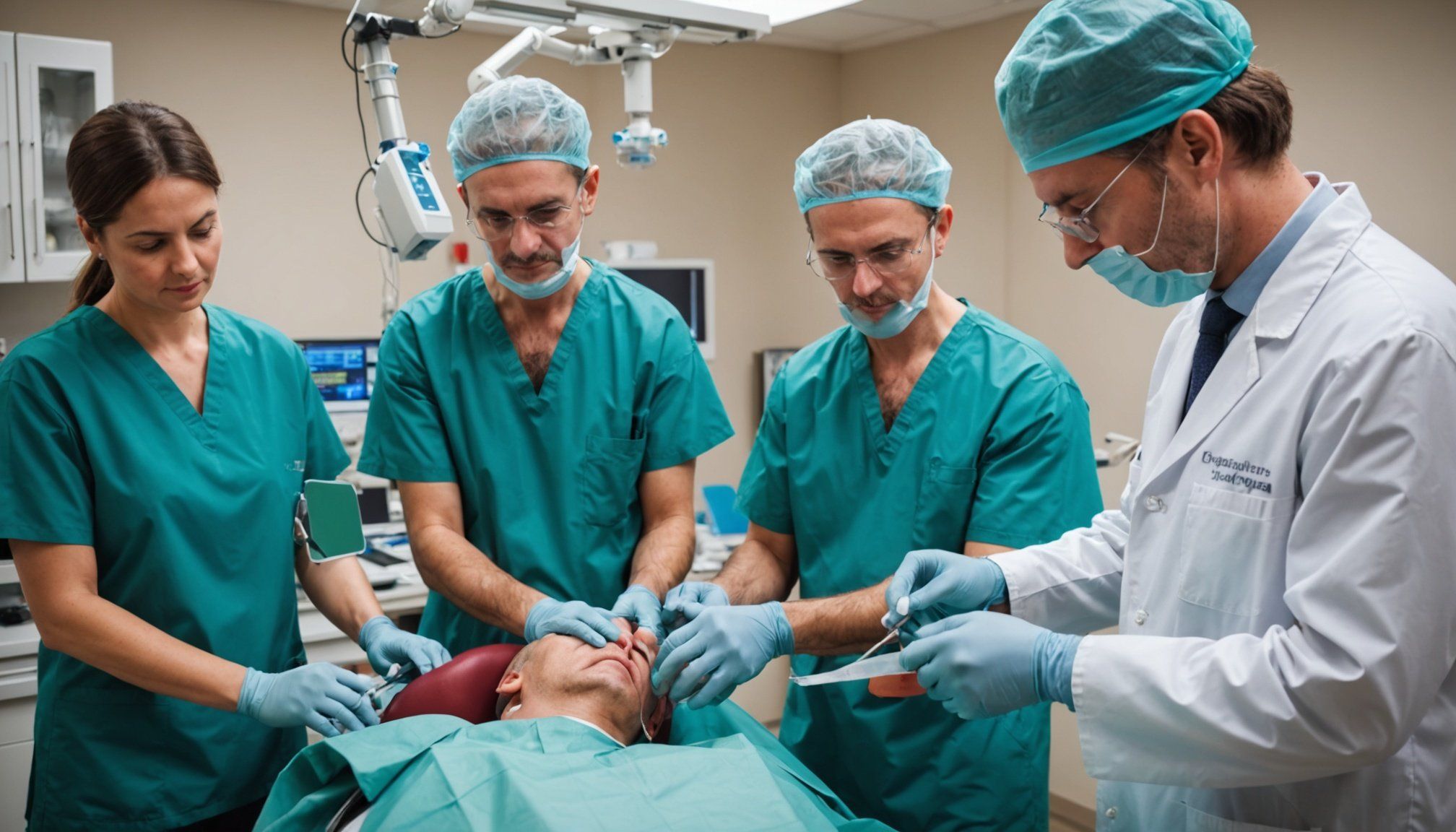Overview of Lung Transplant Recovery
Recovery is crucial for lung transplant patients, as it determines the success and longevity of the transplant. Ensuring effective lung transplant recovery is vital to reducing complications and enhancing overall quality of life. Recovery often involves a comprehensive plan focusing on rehabilitation and continuous monitoring.
Minimally invasive techniques, increasingly adopted by UK thoracic surgeons, play a significant role in improving patient outcomes. These techniques reduce recovery time by minimising tissue damage and lowering the risk of infections. Innovations are continuously evolving, allowing surgeons to offer safer and more effective procedures that significantly contribute to recovery success.
Also to discover : What are the best practices for UK health professionals in conducting patient assessments remotely?
However, despite these advancements, patients face common challenges during recovery. One of the primary challenges is the risk of organ rejection, which can occur if the patient’s immune system attacks the new lungs. Immunosuppressive medications are essential to prevent rejection but can lead to other complications, like increased susceptibility to infections.
Another challenge is maintaining lung function, necessitating rigorous respiratory therapy and lifestyle modifications. Adhering to medical advice and regular follow-ups with healthcare professionals are fundamental for overcoming these challenges effectively. Understanding these elements in lung transplant recovery helps patients and healthcare professionals navigate this complex process more successfully.
Also to discover : Effective Non-Medication Strategies for UK Pediatricians in ADHD Management: Best Practices Unveiled
Innovative Minimally Invasive Techniques
In the realm of minimally invasive surgery, advancements are making remarkable strides in recovery enhancement, particularly within thoracic surgery.
Video-Assisted Thoracoscopic Surgery (VATS)
Video-Assisted Thoracoscopic Surgery (VATS) revolutionises lung transplants with a less invasive approach. By utilising a small camera and instruments inserted through tiny incisions, surgeons can perform complex thoracic surgeries. This method significantly reduces recovery time compared to traditional open surgery, offering patients a quicker return to their daily activities. VATS minimizes physical trauma, leading to reduced pain and shorter hospital stays, underscoring its prominence in modern thoracic procedures.
Robotic-Assisted Surgery
Robotic-assisted techniques have transformed thoracic surgery through enhanced precision. Surgeons control robotic arms with minute movements, eliminating tremors and improving surgical accuracy. This precision translates into better patient outcomes and faster recovery times. Patients undergoing robotic surgery often experience reduced postoperative pain and fewer complications, establishing these surgeries as a preferred alternative for suitable candidates.
Endobronchial Techniques
Endobronchial procedures for lung transplants focus on accessing airways without large incisions. These techniques reduce recovery complications and optimise patient outcomes. By employing tools passed directly through the trachea and bronchi, surgeons can effectively address various conditions without invasive surgery. Studies showcase significant improvements in recovery, reinforcing the efficacy of endobronchial methods in modern medical practice.
Benefits of Minimally Invasive Techniques for Recovery
Minimally invasive procedures are revolutionising patient recovery, making significant strides in various medical fields, including lung transplant surgeries. Such techniques are not only quicker but also lead to a reduction in pain and scarring, enhancing overall patient comfort. The precision of minimally invasive strategies involves smaller incisions. This approach drastically reduces the trauma experienced by the body during surgery. Consequently, patients often report experiencing less pain post-operation.
A notable advantage of these procedures is the faster recovery times, allowing for earlier hospital discharge. This acceleration in the recovery process is a game changer in healthcare, reducing the time patients spend hospitalised, which in turn lowers the associated healthcare costs. Additionally, patients tend to return to their daily activities more quickly.
Beyond the short-term benefits, minimising surgical invasiveness can lead to improved long-term health outcomes. Reduced scarring often results in fewer complications during the recovery phase, enhancing life quality post-surgery. Particularly in lung transplant cases, the minimally invasive approach contributes to a decrease in rejection rates, improving lung transplant results. Through these techniques, we witness not just the easing of immediate surgical recovery but also a promising enhancement in the patient’s overall long-term wellbeing.
Real-Life Case Studies and Testimonials
Exploring patient success stories provides valuable insights into the effects of medical procedures. Sharing clinical outcomes and testimonials helps others understand what they might experience.
Case Study: Patient A
Patient A underwent a minimally invasive surgical procedure aimed at addressing chronic back pain. The recovery journey highlighted the effectiveness of advanced techniques designed to minimise trauma. Key lessons from this case included the importance of early mobility and personalised rehabilitation in achieving excellent outcomes. Through tailored physiotherapy, Patient A regained mobility faster than anticipated, reducing pain significantly within weeks post-surgery. Reflecting on their experience, the patient expressed gratitude for a speedy recovery, noting how timely intervention restored their quality of life and enabled them to resume daily activities without assistance.
Case Study: Patient B
Facing unique recovery challenges, Patient B dealt with substantial mobility restrictions post-surgery. In comparing traditional approaches to minimally invasive options, significant advantages in healing time and discomfort levels were noted. The reduced scarring and hospital stay associated with minimally invasive surgeries were pivotal to Patient B’s progress. In their testimonial, the patient praised the multidisciplinary team’s support, emphasising the psychological and physical benefits of feeling less “like a patient” and more quickly returning to routine life.
Risks and Considerations
When it comes to minimally invasive techniques, understanding the surgical risks and implications for patient safety is crucial. Although these procedures generally involve smaller incisions and shorter recovery times, they are not without their challenges. Complications such as infection, bleeding, or unintended damage to adjacent tissues may still occur. Awareness of these risks assists patients in making fully informed decisions.
The importance of proper patient selection cannot be overstated. Each case must be individually assessed to determine candidacy. Factors like medical history, overall health, and specific surgical needs greatly influence outcomes. Selecting the right patients minimizes potential complications and enhances the success rate of minimally invasive procedures.
Post-operative care is another critical aspect of ensuring the patient’s well-being. Adherence to recovery guidelines is essential. This can include:
- Monitoring surgical sites for signs of infection
- Managing pain with prescribed medications
- Gradually resuming physical activity
Patient safety remains a priority throughout the recovery phase. Regular follow-up appointments enable healthcare providers to track the patient’s progress and address any emerging complications promptly. By understanding surgical risks, implementing precise patient selection, and maintaining vigilant post-operative care, the pathway to recovery is both safer and more effective.
Insights from UK Thoracic Surgeons
Understanding the nuances and advancements in thoracic surgery requires consulting healthcare professionals who are at the forefront of the field. Their expert opinions offer a glimpse into the current state and future directions of this critical healthcare domain.
Surgeon Interviews
Interviews with leading UK thoracic surgeons reveal innovative perspectives and advancements in surgical techniques. These expert opinions highlight the transition towards minimally invasive procedures, which are becoming a staple in modern thoracic surgery. Surgeons recommend such techniques for their reduced recovery times and improved outcomes, which are significant for complex operations like lung transplants.
Moreover, these healthcare professionals emphasise the importance of continual research and innovation. Their recommendations for future lung transplant procedures include incorporating robotic-assisted systems to enhance precision and safety. This could lead to fewer complications and quicker patient recovery, transforming standard practices in thoracic surgery.
Clinical Study Links and Research
Several clinical studies support these surgical advancements. Research on minimally invasive techniques demonstrates their effectiveness in enhancing patient care. Key findings suggest a significant reduction in postoperative pain and quicker recuperation. Such insights are vital for caregivers and patients looking to understand the benefits of these modern approaches.
For those who wish to delve deeper, further studies are available to explore these innovative methods and their implications. These resources offer a comprehensive understanding of how such advancements are reshaping thoracic surgery.
Tips for Patients and Caregivers During Recovery
For patients embarking on the path to recovery, maintaining a structured approach is crucial. Following recovery tips can significantly enhance the healing process. Establishing a schedule for medication, rest, and exercise aids in ensuring consistency and maximising recovery benefits. Regularly scheduled activities allow the body to adapt and recuperate effectively.
For caregivers, understanding the nuances of patient care is vital. Providing nutritional meals, assisting with mobility, and fostering a positive environment are essentials of effective caregiver guidance. Simple actions, like encouraging social interaction or aiding in simple tasks, can have profound impacts on a patient’s mental well-being and physical recovery.
Follow-up appointments play a pivotal role in assessing progress and preventing complications. They provide an opportunity for healthcare professionals to monitor healing and adjust treatment plans as necessary, ensuring the recovery trajectory remains on track.
Resources for patients and families are abundant, with hospitals often offering support groups and educational materials. Engaging with these resources can equip both patients and caregivers with the necessary knowledge and emotional support. Whether through online forums, local community groups, or hospital advisories, accessing these resources builds confidence and ensures all involved are informed, prepared, and supported throughout the recovery journey.











